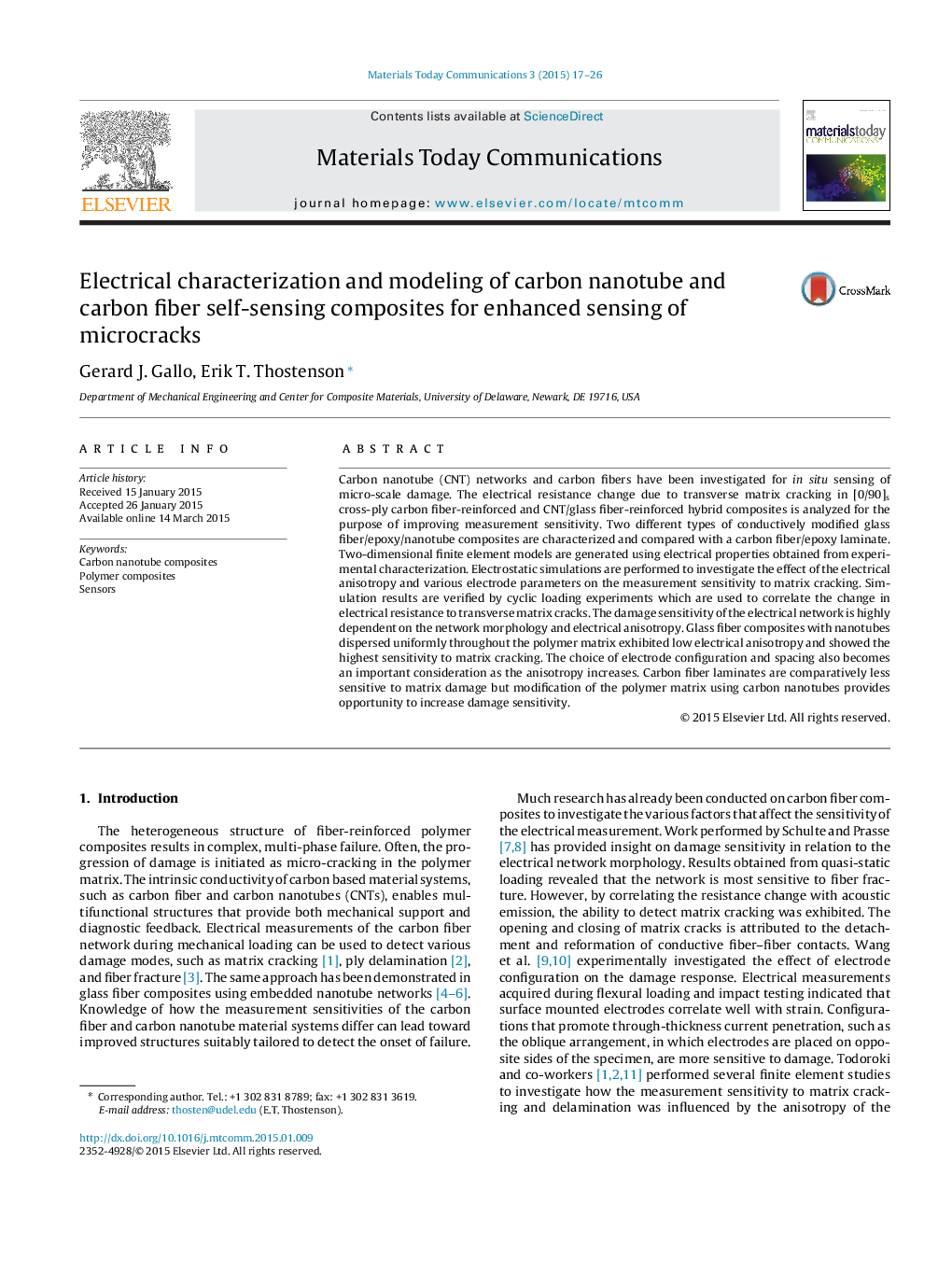| Article ID | Journal | Published Year | Pages | File Type |
|---|---|---|---|---|
| 1586196 | Materials Today Communications | 2015 | 10 Pages |
Carbon nanotube (CNT) networks and carbon fibers have been investigated for in situ sensing of micro-scale damage. The electrical resistance change due to transverse matrix cracking in [0/90]s cross-ply carbon fiber-reinforced and CNT/glass fiber-reinforced hybrid composites is analyzed for the purpose of improving measurement sensitivity. Two different types of conductively modified glass fiber/epoxy/nanotube composites are characterized and compared with a carbon fiber/epoxy laminate. Two-dimensional finite element models are generated using electrical properties obtained from experimental characterization. Electrostatic simulations are performed to investigate the effect of the electrical anisotropy and various electrode parameters on the measurement sensitivity to matrix cracking. Simulation results are verified by cyclic loading experiments which are used to correlate the change in electrical resistance to transverse matrix cracks. The damage sensitivity of the electrical network is highly dependent on the network morphology and electrical anisotropy. Glass fiber composites with nanotubes dispersed uniformly throughout the polymer matrix exhibited low electrical anisotropy and showed the highest sensitivity to matrix cracking. The choice of electrode configuration and spacing also becomes an important consideration as the anisotropy increases. Carbon fiber laminates are comparatively less sensitive to matrix damage but modification of the polymer matrix using carbon nanotubes provides opportunity to increase damage sensitivity.
